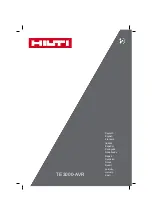
SL2KW SERIES MANUAL
19
118088-001 REV C
4.6 Control/Power PWB
The majority of control circuits for power supply controls
are located on the CONTROL/POWER PWB. +15VDC, -
15VDC, and +10VDC is generated on the
CONTROL/POWER PWB. High Voltage On/Off control
is accomplished by K3, and its associated circuitry.
Interlock control is provided by K4.
Voltage feedback from the high voltage divider is sent to
the control board via a mass terminated ribbon cable.
Gain adjustment is provided on the HV PWB. The KV
feedback signal is sent to the front panel DVM and to the
REAR PANEL 25 pin D connector for remote
monitoring. K2 provides switching between feedback
and program signal for the front panel DVM’s. This
allows the user to preset the desired output before
energizing high voltage.
Program voltages are typically ramped up to set level by a
slow start circuit.
An arc sense circuit provides sensing, quench and
indicator of arc conditions. Consult the operation manual
for a detailed description of the arc sense control.
Current feedback from the high voltage rectifier is sent to
sense resistors located on the High Voltage Assembly.
Calibrated feedback is then sent to the applicable circuitry
on the Control/Power Board.
U12 circuit provide visual indication of the control mode,
which is in operation. These signals are sent to the
FRONT PANEL ASSEMBLY for front panel status
indication.
The resonant control circuitry consists of a pulse width
converter. U17 generates all pulse width control signals.
Power supply inhibit circuits are provided by U22 and
K3. System Fault control and Indication is provided by
U19, and associated circuitry. Diagnostic signals are
latched and then sent to the FRONT PANEL
ASSEMBLY for status indication.
4.7 Front Panel Assembly
Front Panel controls, meters and status indications are
connected to the FRONT PANEL PWB. The FRONT
PANEL PWB interfaces directly to the
CONTROL/POWER PWB.
4.8 Options
Due to the many variations of models and options
provided in the SL Series, details of actual circuits used
may differ slightly from the above descriptions. Consult
Spellman’s Engineering Department for questions
regarding the principles of operation for the SL Series.










































